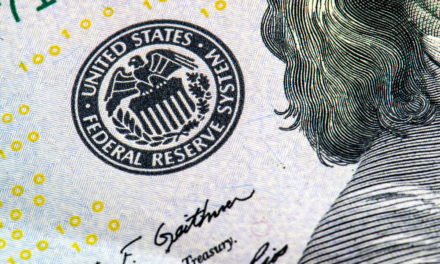President Donald Trump’s economic game plan upon taking office was simple: tax cuts, new jobs and deregulation.
And it worked.
The economy grew at a 3 percent clip in 2018, and there were so many open jobs there weren’t enough qualified workers to fill them.
Fast forward to 2019, however, and the world economy is slowing, having a negative impact on the U.S. as demand for American goods and services has waned.
According to the Washington Times’ Richard W. Rahn, the chairman of the Institute for Global Economic Growth, Trump needs to new game plan if he intends to hold on to swing voters who dislike his personality and temperament. And there appears to be trouble brewing in big swing states like Wisconsin and Florida, where just 40 percent of voters said he should be reelected as opposed to 53 percent opposed to a second term.
Without vigorous economic growth, what does Mr. Trump have to sell? Many voters disliked his personality and, at times, crude manner, and some believed him to be corrupt, but they were willing to overlook these negatives as long as they thought he was capable of creating an environment conducive to high job and income growth.
Without new pro-growth policies, economic growth will wane, for the following reasons. Government spending is continuing to grow at a faster rate than GDP, which is a drag on the economy. Many incorrectly believe that government spending is a stimulus to growth. This is only true up to a point, which the United States and most countries exceeded many years ago. Countries with larger government sectors tend to create fewer high-paying jobs and grow slower than countries with smaller government sectors. Remember that President Obama’s trillion-dollar bailout program after the financial crisis was supposed to create 4 percent growth? It did not happen.
Most government spending now goes into transfer programs — where the recipients often only receive payments when they don’t work — negative GDP. That, coupled with the normal inefficiency of most government spending programs due to mismanagement, lack of competition and improper design, means that bigger government is a drag rather than a push.
The president’s new budget does virtually nothing to reform “entitlement programs,” probably because he knew that nothing meaningful would get through the Democratic House. The Republicans had their chance when they controlled both houses of Congress and the executive — but they blew it — because of both weak-kneed leadership and wimpy representatives.
The tax cuts had a very beneficial effect, but much of the effect was “one-off” in that they did increase economic growth for a year and raise the permanent level of GDP, but will have little effect on future economic growth. There are still many provisions in the tax code that are counterproductive and, hence, if eliminated, would give another stimulus to growth. The Democratic House will probably resist any further rate reductions, even when they can be shown to be beneficial, but there are some things that can be done administratively. The IRS, rather than the Congress, has defined what is meant by a “capital gain.” Economists would not include the inflation portion of a gain as income, as has been done by the IRS. Some portions of the tax code are already indexed for inflation, and “capital gains” should be defined as real gains, and not the gains from inflation. A number of tax law experts believe that change can be made administratively and should be done.
The capital gains tax should also be removed from commodities trading, including cryptocurrencies like Bitcoin. The tax provides no net revenue since gains and losses tend to net out, it is a huge administrative burden, and it makes law breakers out of those who trade cryptocurrencies and don’t keep very precise records of all of their transactions — which is most people.
Many of the new tariffs are downright destructive (despite the claim they are temporary), and the uncertainty caused by the tariff initiative undermines investment and growth. The president still seems to lack an understanding of trade economics, given his ill-informed statements about “trade deficits.”
The deregulation effort during the first two years of the Trump administration was very successful but much of the momentum has now waned; however, enormous economic benefits can still be achieved by eliminating or modifying tens of thousands of useless and counterproductive regulations that are still on the books. This is particularly true with the financial regulations, which are unduly burdensome on smaller banks and financial institutions. Many of the anti-money laundering regulations do not meet basic cost-benefit standards, including the new proposed “beneficial ownership” regulations.
There are dozens of actions, both large and small, that the administration could take to renew and spur future economic growth. A number of public-policy organizations have provided many good ideas. Notably, David Burton, a senior fellow in economic policy at The Heritage Foundation, in testimony before the Committee on Small Business of the House of Representatives, provided a specific list of 97 things that could be done to free up the economy.
Peter J. Wallison, former general counsel of the U.S. Treasury and a senior fellow at AEI, has written an excellent new book, “Judicial Fortitude,” which lays out a path for freeing us from the economic and liberty drag of the administrative state.
There is not a dearth of ideas of how to keep economic growth at a high level — what is needed is a plan from the president of how to implement them in a timely manner. Relying on the Democrats again to give him an opponent even more unlikable is not necessarily a winning strategy.




